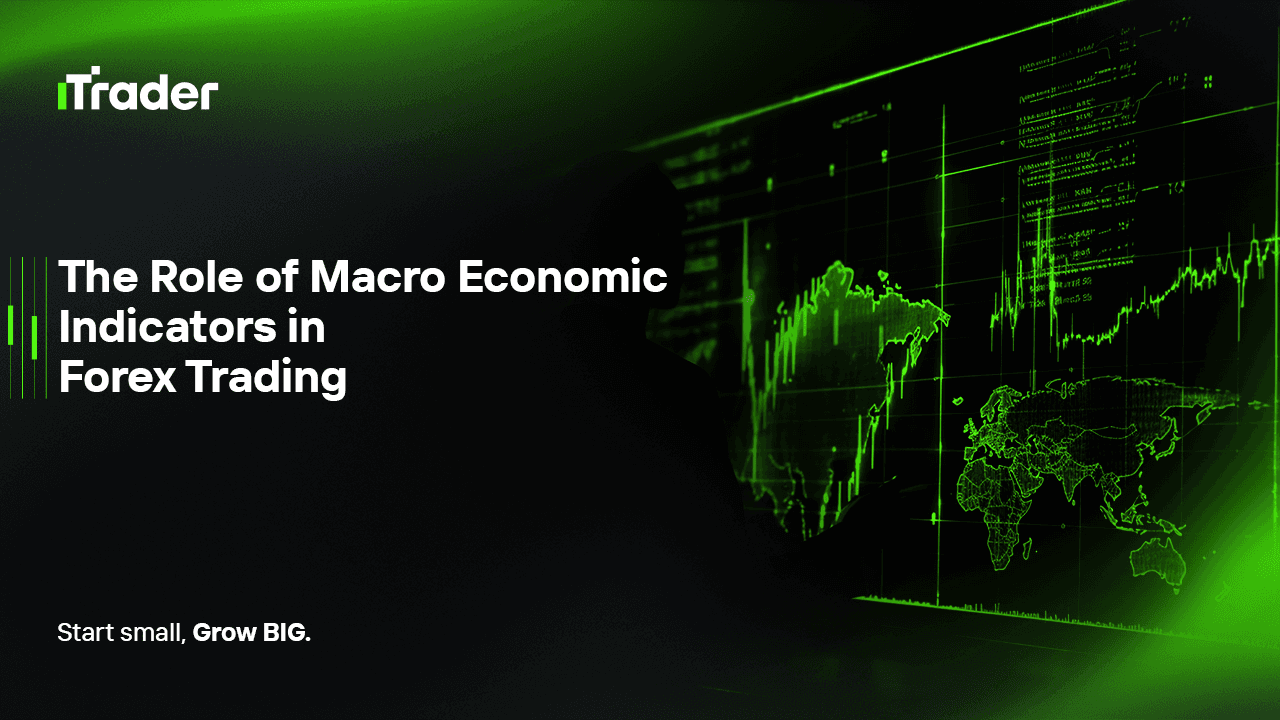2025-08-22
In the world of professional trading, especially for those engaged in prop firm challenges, understanding the forces that drive currency movements goes far beyond technical analysis. While price action, liquidity shifts, and order flow dynamics are crucial in short-term decision-making, the macro backdrop sets the stage upon which these micro-movements unfold. For prop traders who need consistent performance under strict drawdown and risk rules, grasping the relationship between macroeconomic indicators and forex market behavior is not just an academic exercise—it is a survival skill.

Currencies are, at their core, expressions of national economies. The health, stability, and policy direction of an economy shape investor perception, capital flows, and ultimately the valuation of its currency. This means that data points like GDP growth, inflation reports, interest rate decisions, and labor market trends are not simply numbers on an economic calendar; they are signals of structural pressure that shape medium- and long-term trends while also creating short bursts of volatility.
In this article, we will explore how macroeconomic indicators interact with forex markets, with a focus on what prop traders specifically need to extract from them. We will look at key economic data categories, how they impact currency valuations, the interplay with monetary policy, and practical strategies to incorporate macro awareness into a prop trading framework.
Prop firm traders often emphasize risk control, trade frequency, and execution discipline. Yet the majority of their failures are not due to poor entries but rather inadequate adaptation to market regime shifts. These shifts are almost always driven by macroeconomic developments—policy pivots, unexpected data surprises, or global capital rotations.
Ignoring macro means ignoring the root causes of volatility clusters. For example:
For a prop trader bound by strict maximum daily loss and overall drawdown limits, understanding these forces can prevent getting blindsided by volatility that looks “random” on the chart but is fully explainable through the macro lens.
Macroeconomic data releases are not created equal. Some indicators consistently move markets; others provide context without triggering major price shifts. Below are the key categories:
For traders, growth indicators matter because they influence risk appetite and central bank expectations.
Currencies often react violently to inflation surprises, since they directly affect interest rate futures pricing.
Interest rates are the ultimate driver of currency valuation. The expectation of higher yields attracts capital flows. Therefore, central bank meetings, forward guidance, and minutes are often more important than the data itself.
It is not the raw data that moves markets—it is the difference between expectation and outcome. A CPI print of 3.2% might strengthen a currency if consensus was 3.0%, but weaken it if traders had already priced in 3.5%.
This is why prop traders need to track expectations, not just releases. Economic calendars with consensus estimates, as well as tools like OIS curves and bond yield spreads, give critical context.
Another layer is market sentiment and narrative. In some regimes, traders ignore weak data if they believe a central bank is committed to tightening. In other regimes, even small misses can trigger outsized moves. Thus, the same number can have different effects depending on macro context.
One of the biggest advantages of macro awareness is in position sizing and risk allocation. Prop traders don’t need to predict every number, but they must anticipate volatility pockets.
In prop environments where risk per day is capped, managing exposure around macro events is essential for survival.
For prop traders looking to operationalize macro awareness, a simple framework can be:
While individual data releases move markets in the short run, larger macro cycles drive sustained trends. Prop traders who align with these cycles can ride multi-month moves while avoiding contrarian traps.
Key themes include:
Prop traders often focus heavily on technical precision—entry timing, spreads, execution speed. But without a macro compass, these micro-skills are vulnerable to shifts that feel random. In reality, nothing is random when you see the cause-effect chain: data → central bank expectations → capital flows → currency price.
Understanding macroeconomic indicators is not about becoming an economist; it’s about protecting capital, anticipating volatility, and aligning with the market’s dominant forces. For prop traders, it is the difference between surviving challenges and consistently scaling capital allocations.
© 2025 iTrader Global Limited|会社登録番号:15962
iTrader Global Limitedは、コモロ連合のアンジュアン自治島ムツァムドゥのHamchakoに所在し、コモロ証券委員会によって認可・規制を受けています。ライセンス番号は L15962/ITGL です。
iTrader Global Limitedは「iTrader」の商号で運営しており、外国為替取引業務を行う許可を受けています。会社のロゴ、商標、ウェブサイトはすべて iTrader Global Limited の専有財産です。
iTrader Global Limitedの他の子会社には、iTrader Global Pty Ltd(オーストラリア会社登録番号(ACN):686 857 198)が含まれます。 この会社は、Opheleo Holdings Pty Ltd(オーストラリア金融サービスライセンス(AFSL)番号:000224485)の認可を受けた代表者(AFS代表番号:001315037)です。登録住所は Level 1, 256 Rundle St, Adelaide, SA 5000 です。
免責事項: この法人は、本ウェブサイト上で取引される金融商品の発行者ではなく、それらに対して責任を負いません。
リスク警告: 差金決済取引(CFD)は、レバレッジにより資本の急速な損失リスクが高く、すべての利用者に適しているとは限りません。
ファンド、CFD、その他の高レバレッジ商品を取引するには、専門的な知識が必要です。
調査によると、84.01%のレバレッジ取引者が損失を被っています。取引を開始する前に、リスクを十分に理解し、資金を失う可能性があることを認識してください。
iTraderは、レバレッジ取引によるリスク、損失、またはその他の損害について、個人または法人に対して一切の責任を負わないことを明言します。
利用制限: iTraderは、法律、規制、または政策によりこのような活動が禁止されている国の居住者を対象として、本ウェブサイトやサービスを提供していません。